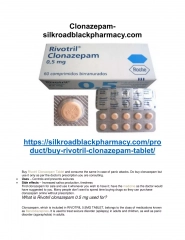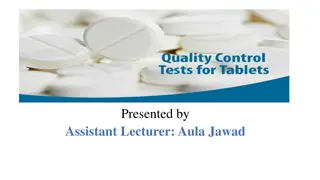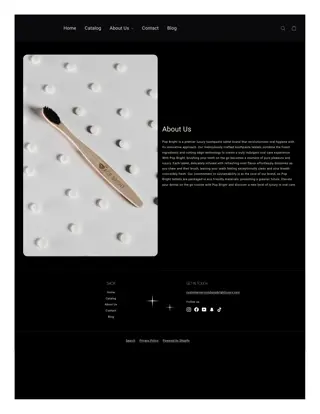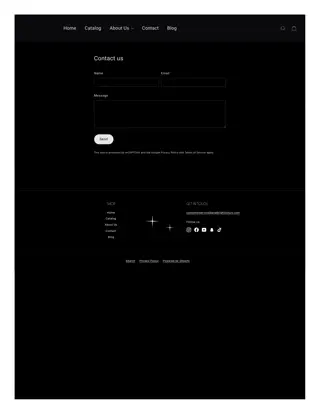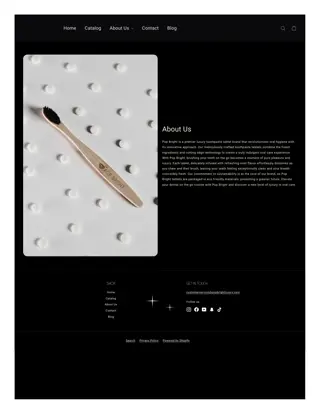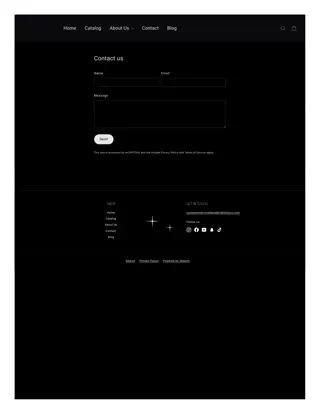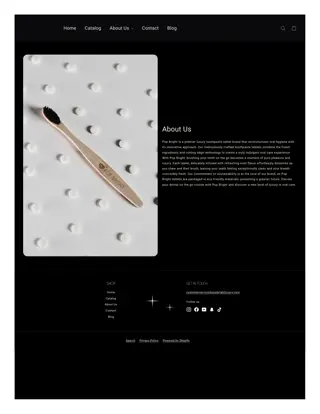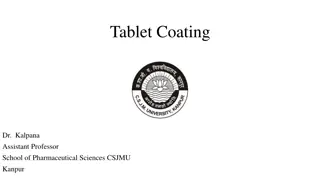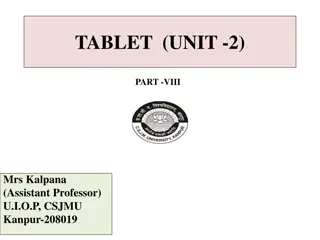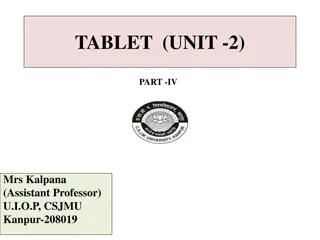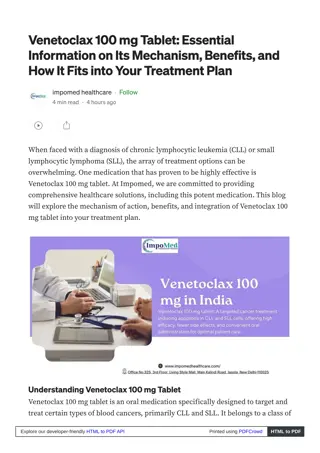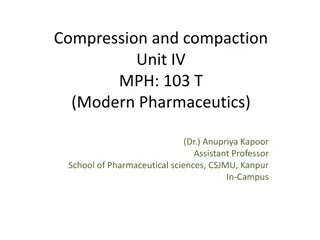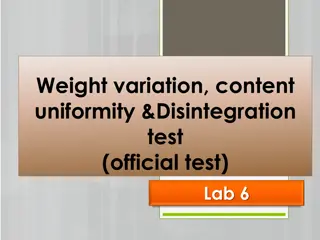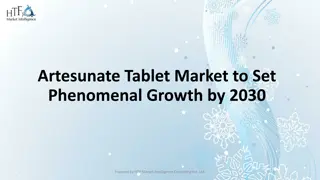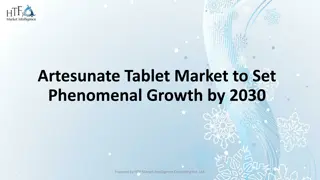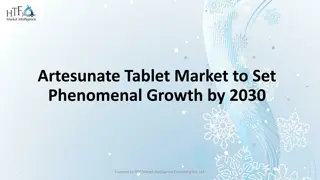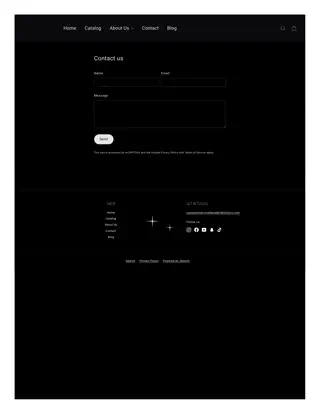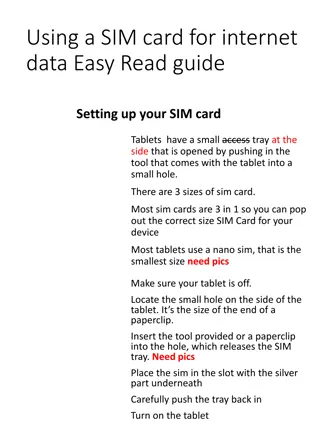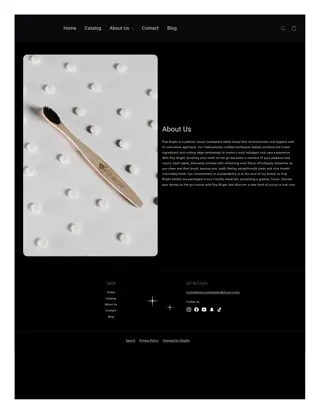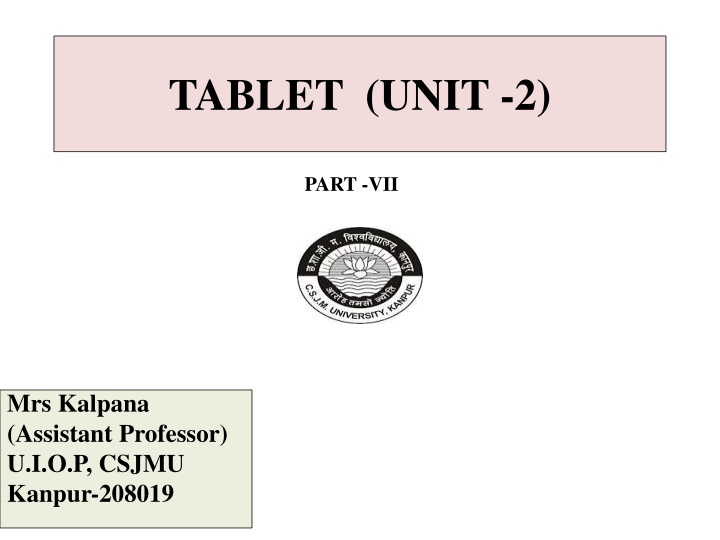
Tablet Coating Techniques and Applications
Explore the world of tablet coating with a focus on sugar coating, film coating, and enteric coating. Learn about the advantages and disadvantages of sugar coating, along with detailed steps involved such as sealing, sub-coating, syruping, finishing, and polishing. Discover the purpose of seal coat and sub-coating in enhancing tablet stability and size. Dive into the process of smoothing and syruping to achieve uniform and elegant tablet coatings.
Download Presentation

Please find below an Image/Link to download the presentation.
The content on the website is provided AS IS for your information and personal use only. It may not be sold, licensed, or shared on other websites without obtaining consent from the author. If you encounter any issues during the download, it is possible that the publisher has removed the file from their server.
You are allowed to download the files provided on this website for personal or commercial use, subject to the condition that they are used lawfully. All files are the property of their respective owners.
The content on the website is provided AS IS for your information and personal use only. It may not be sold, licensed, or shared on other websites without obtaining consent from the author.
E N D
Presentation Transcript
TABLET (UNIT -2) PART -VII Mrs Kalpana (Assistant Professor) U.I.O.P, CSJMU Kanpur-208019
Various Types of tablet coating Sugar coating Film coating Enteric coating
SUGAR COATING The process involves the application of sugar solution with color for several times to give uniform and elegant film. Advantages : It prevents unpleasant odour Give sweet taste to tablet by masking bitter taste. Highly elegant and glossed tablets are obtained. Disadvantages: Duration: Hours to few days, Time taking Steps involved in sugar coating are : Sealing Sub-coating Syruping(smoothing) Finishing Polishing 35
Sugar Coating Sealing: Sealing is done to ensure that a thin layer of water proof material, such as, shellac or cellulose acid phthalate is deposited on the surface of the tablets. The shellac or cellulose acid phthalate is dissolved in alcohol or acetone & its several coats are given in coating pan. A coating pan is made up of copper or stainless steel. The pan is rotated with the help of an electric motor. Eg:shellac,zein,Oleicacid,PG,PEG4000,alcohol,methylene chloride. Zein is alcohol-soluble protein derivative. Shellac is more effective(because of polymerization of shellac), But it lengthens tablet disintegration and dissolution times. 38. Over wetting of tablet Moisture is absorbed Leads to
Purpose of seal coat: Over wetting of tablet Moisture is absorbed Leads the Tablet softening disintegration affects Physical and chemical stability. (To over come this problem seal coating is done)
Sub coating In sub coating several coats of sugar & other material such as Gelatin, Acacia etc. are given to round of tablet and to help in building up to tablet size. Several coats of concentrated syrup containing acacia or gelatin are given. After each addition of the syrup, dusting powder is sprinkled. The dusting powder is a mixture of starch, talc & powdered acacia. Purpose: To form uniform edges To build up the tablet size. Sub coating increases the tablet weight from 50 to 100 percent. Examples- Gelatin, sugarcane powder, corn syrup, syrup , distilled water, Gum acacia. It involves Application of binder solution to the Tablets followed by Dusting of sub coating with powders and drying until the tablet edges have been covered & The desired thickness is achieved.
Smoothing & Syruping This is done to give sugar coats, opacity & colour to tablets. Several coats of the syrup are applied. Colouring materials & opacity agent are also added to the syrup The process of coating is repeated until uniform coloured tablets are obtained Purpose: The purpose is to cover the imperfections on the tablet surface caused during sub coating step. It involves the application of syrup coating with grossing syrups followed by the addition of dilute colorants to provide tinted base. In subsequent steps, the syrup solution containing dye are applied until final size and Color are achieved. The final step a clear syrup coat without dye are applied.
No colour is added until the tablets are quiet smooth. Premature application to the rough tablets can produce a Mottled appearance in the final coated tablets. E.g: Syrup coating constituents- colorant , sub coating powder , calcium carbonate ,cane sugar powder, corn starch, syrup , distilled water.
Finishing Three to four coats of sugar are applied in rapid succession without dusting powder and cold air is circulated to dry each coat. Thus forms a hard smooth coat. Polishing Beeswax is dissolved in organic solvent and few coats of it are given. The finished tablets are transferred to a polishing pan is rotated at a suitable speed so the wax coated tablets are rubbed on the canvas cloth. This gives a proper shining to the tablets. Sugar coating is an art. .
FILM COATING The tablets are coated with a single or mixture of film forming polymers like Hydroxy ethyl methyl cellulose, carbowax ,Hydroxypropyl methyl cellulose,methyl cellulose,PEG 400 etc. The polymer is dissolved in some volatile organic solvent and is sprayed over the tablets in a coating pan. It is also used to make tablets waterproof before sugar coating. Film coating may be enteric or non enteric.
Advantages of Film coating It is a less time consuming technique. Not much labour is required. It has no adverse affect on disintegration of tablets. Product cost is less. It protects the drug from the atmospheric changes such as light, air and moisture. Coating is resistant to cracking and chipping. It does not increase the weight of the tablet. No waterproofing is required before actual film coating:

